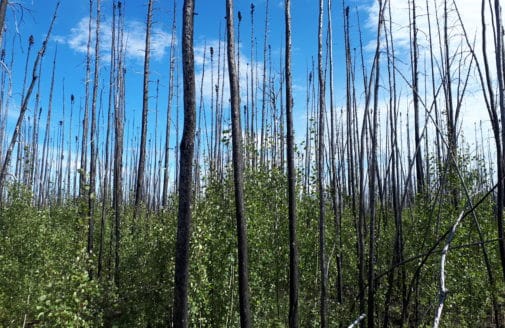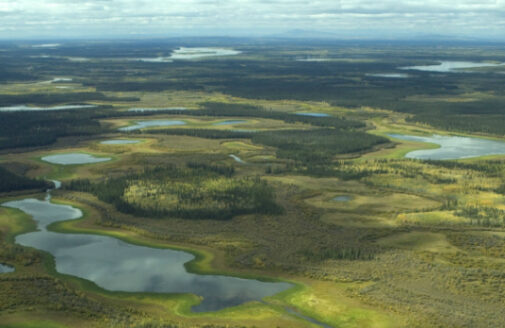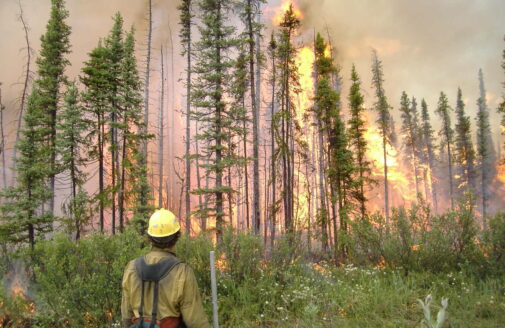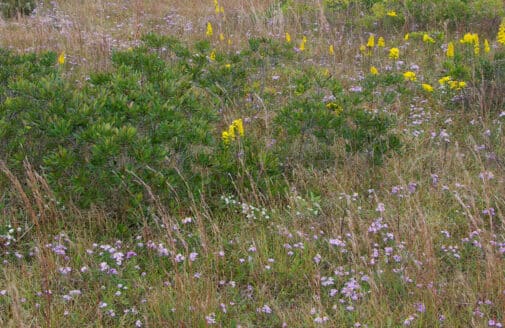The role of boreal fires in climate change in four graphics
New research quantifies carbon emissions from fire in boreal North America
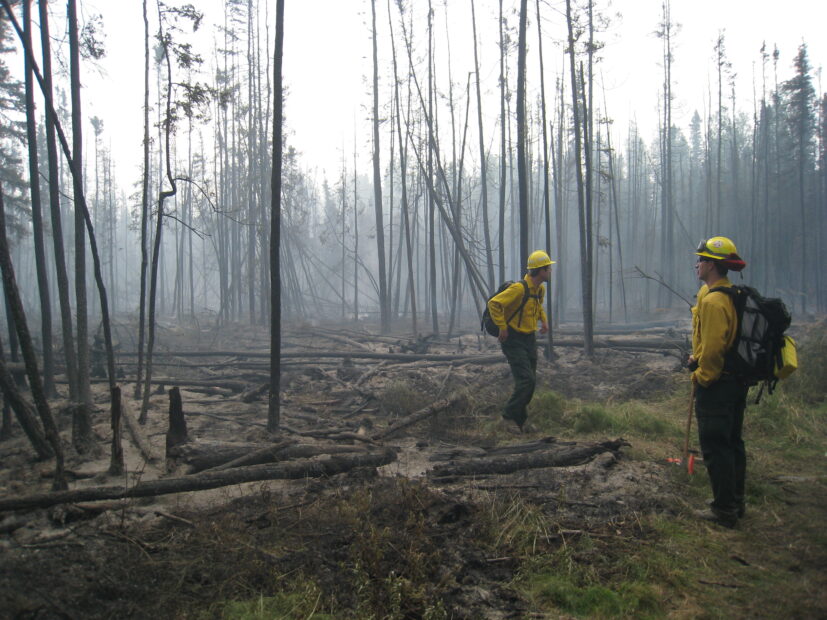
Researchers study burn severity and consumption immediately after a fire.
photo by Dale Haggstrom
When boreal forests burn in the Far North of the U.S. and Canada, the whole world feels the impact. From communities evacuating from the blazes, to smoke clogging the air thousands of miles to the south, to the release of carbon emissions that accelerate climate change, boreal forest fires are a global issue.
Research from Woodwell Climate has recently expanded our understanding of the scope of impact that boreal fires have. A new paper, led by Research Associate Stefano Potter, quantified emissions associated with fires across most of boreal North America, shedding light on the dynamics of boreal fires and climate change. These four graphics explain:
1. Boreal fires threaten an important carbon sink.
Using a new higher-resolution dataset, generated as part of NASA’s Arctic-Boreal Vulnerability Experiment (ABoVE), Potter and his co-authors created a map of burned area across the boreal region. The researchers combined satellite imagery with observations from the largest database of boreal field studies, which allowed them to calculate emissions from both vegetation burned aboveground, and organic matter in the soils that burned belowground.
The results show that the overwhelming majority of carbon emissions from boreal fires—over 80% of total emissions in most places—comes from soils rather than trees. Despite the dramatic imagery of burning forests, most of the real damage is happening below the ground.
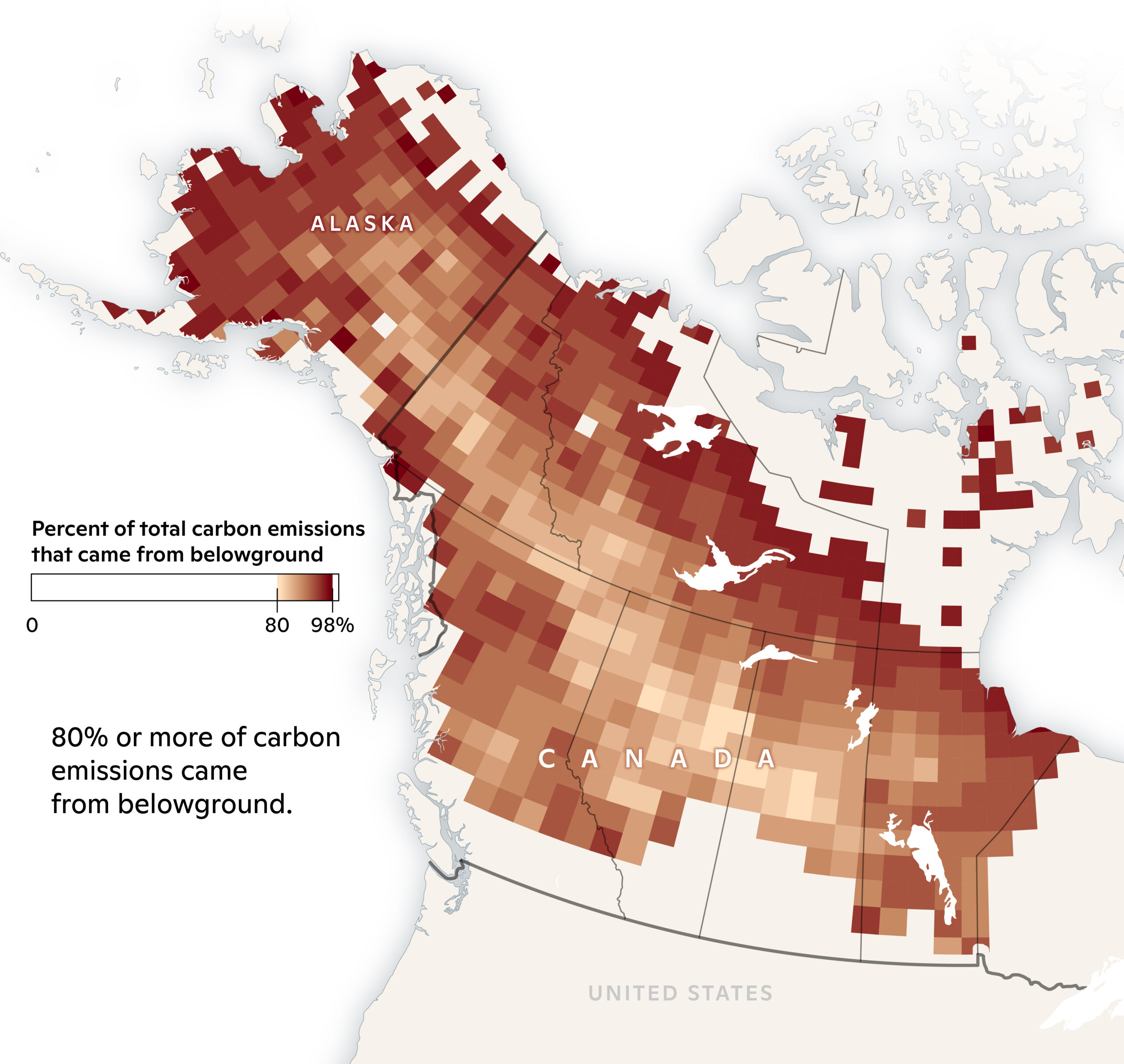
map by Christina Shintani
2. The true impact of boreal emissions is currently underestimated.
That finding on its own was not surprising to researchers, as the majority of carbon in boreal forests is stored below the ground. However, the fact that the overwhelming contribution of belowground carbon to fire emissions is being left out of existing global fire and climate models, means we’re drastically underestimating carbon emissions from Arctic and Boreal environments.
“A large reason for that is because the [existing] models are not detecting the belowground carbon combustion, which we are modeling directly,” says Potter.
Potter and the team working on the paper were able to accurately model belowground carbon loss because of their machine learning approach and the abundance of available field measurements in their dataset.
Accurately representing these numbers in global fire models is critical, because these models are used to plot climate trajectories and inform carbon budgets, which tell us how much we need to cut emissions to stay below temperature thresholds like 1.5 or 2 degrees C.
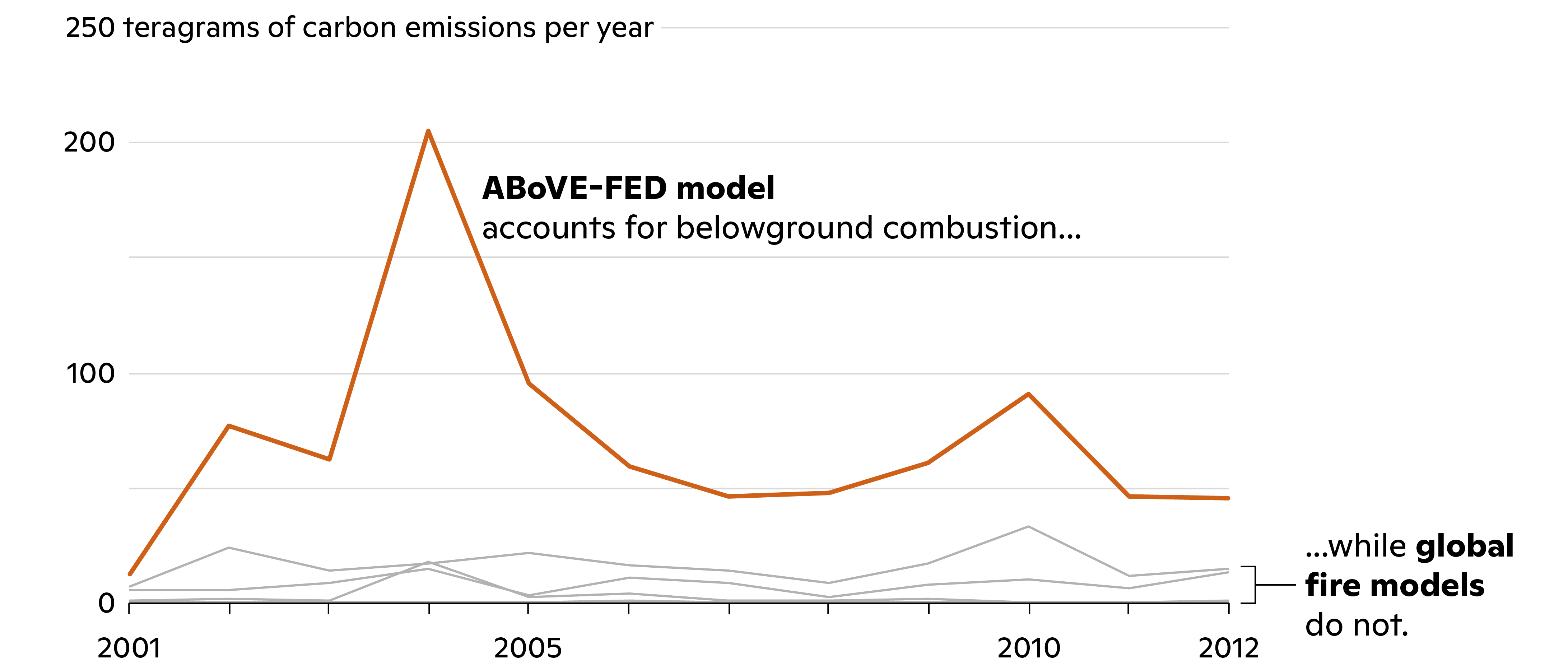
graphic by Christina Shintani
3. Boreal fires are becoming more intense.
It is becoming more urgent to get an accurate understanding of boreal emissions, because boreal fires are becoming larger, more frequent and more intense. Burned area has increased as fire seasons stretch longer, return intervals between fires shorten, and single ignitions can result in massive blazes that burn further and deeper and cause greater carbon loss.
In 2023, for example, while the number of ignitions has been lower than most years since the 1990s, burned area as of August has far surpassed any year in the past three decades.
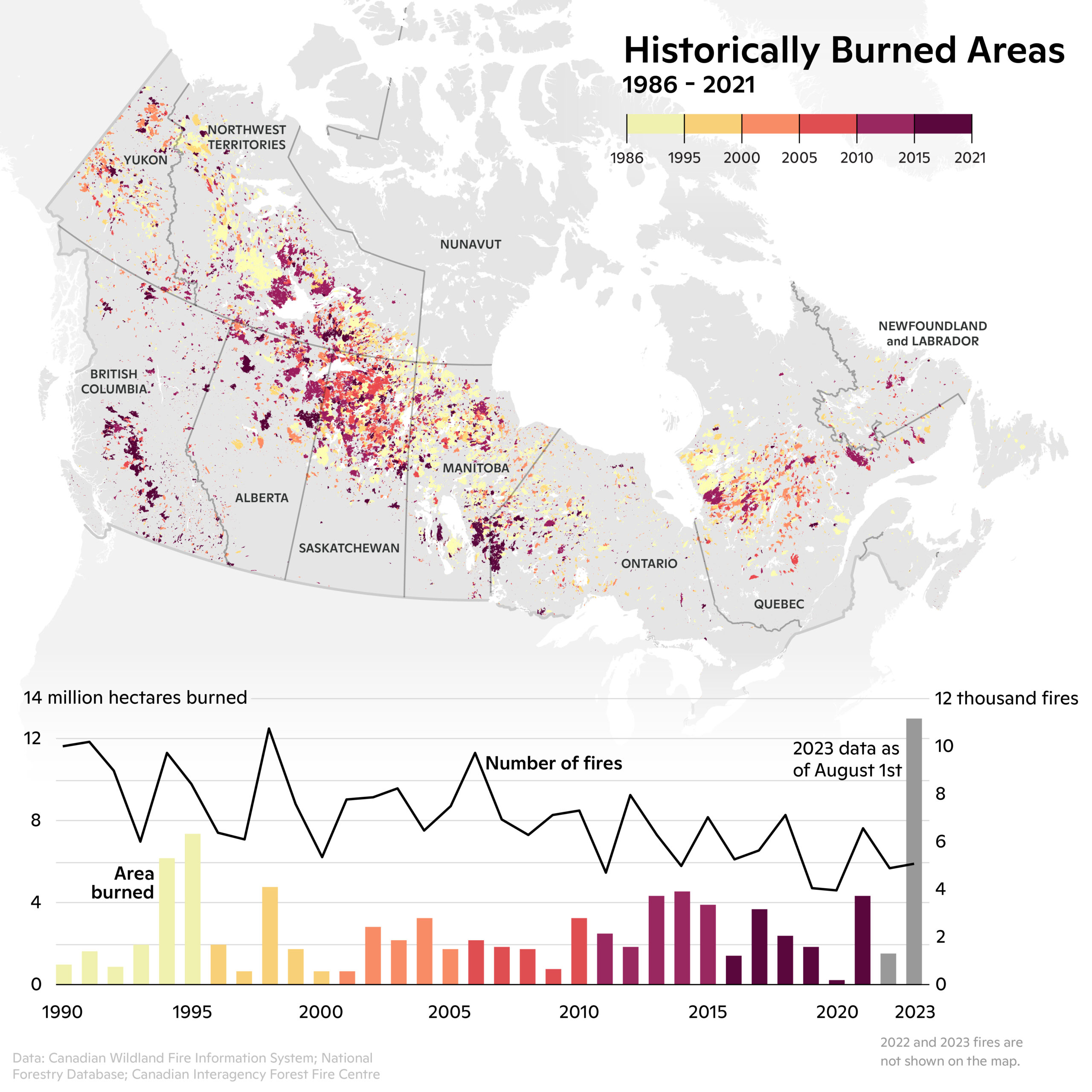
map by Christina Shintani
4.Fire suppression can be a cost effective protection against carbon loss.
Ultimately, preventing carbon loss from boreal forest fires will require bringing down emissions from other sources and curbing warming to get fires back within historical levels. But preventing boreal forests from burning in the short term can offer a climate solution that could buy time to reduce other emissions.
A collaborative study between Woodwell Climate and the Union of Concerned Scientists, published in Science Advances, modeled the cost effectiveness of deploying fire suppression in boreal North America and found that actively combatting boreal fires could cost as little as 13 dollars per ton of CO2 emissions avoided—a cost on par with other carbon mitigation solutions like onshore wind or utility-scale solar. Informed by this data, the U.S. Fish and Wildlife Service has decided to start combating fires in Yukon Flats National Wildlife Refuge, not only when they present a threat to human health, but also with the intent of preventing significant carbon losses. Yukon Flats is underlain by large swaths of carbon-rich permafrost soils, at risk of thawing and combusting in deep-burning fires.
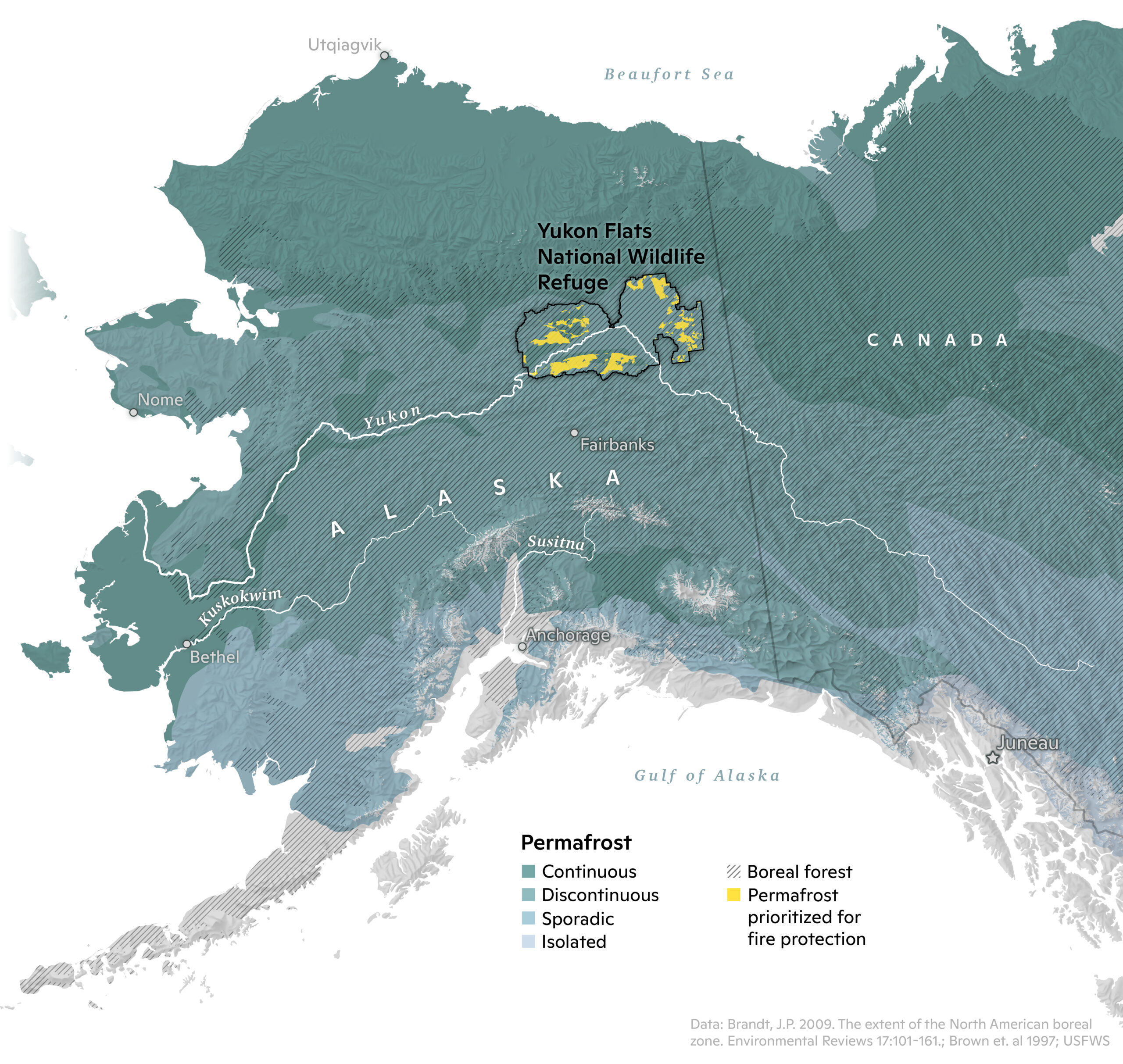
map by Christina Shintani
Deepening our understanding of the complex boreal system with further research will help inform additional strategies for bringing emissions under control, preventing devastating fires that threaten human health both regionally, and across the globe.




